A warm hello to everyone. This issue is a special one: I asked a couple dozen architects, designers, writers, and other keen observers to elaborate on a transcendent experience they have had in the built environment. The topic feels ever more resonant the more I dig in, meaning, there is a lot to extrapolate that may serve as a balm to present realities, or a portal to another dimension.
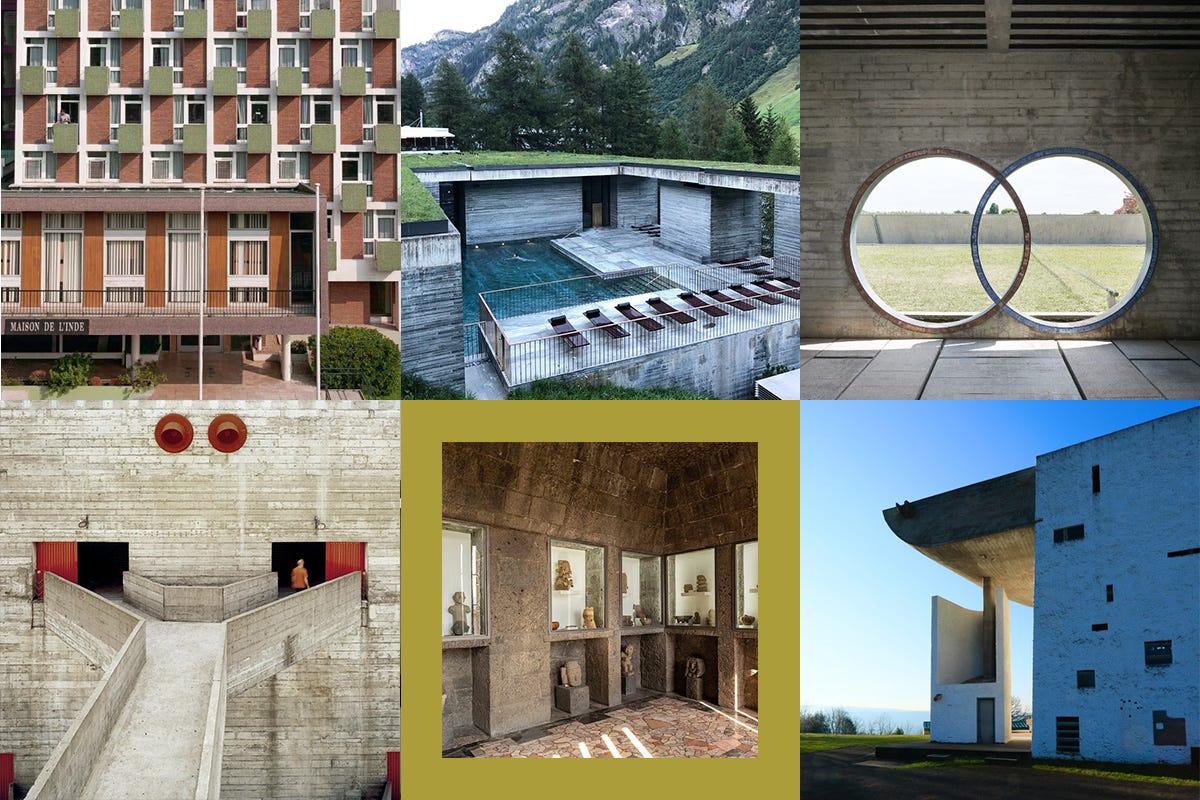
I don’t use ‘transcendent’ in the strictly religious sense—more like a secular version of a spiritual experience: someplace visceral, sensorial, that achieves a noticeably altered state. It’s worth noting that it this can be a trickier query for someone trained in critical analysis of an environment, i.e. a practicing architect or architecture critic. But it’s a worthy exercise for anyone to try and feel a building rather than just look at it.
The prompt wasn’t meant to elicit ecclesiastical buildings per se, but worth noting a strong contingent backing two Le Corbusier buildings: Collins Notre Dame du Haut and La Tourette (where you can actually stay overnight). Secular high priest of architecture Peter Zumthor is a natural pick, as well: his Therme Vals project in Switzerland, completed in 1996, was mentioned more than once. Architect Chris Leong recommended Carlos Scarpa’s Brion Cemetery (YES), which he notes is now “Dune 2 famous.” And for sheer gobsmacking-ness of scale and engineering, one would be remiss not to mention the Pantheon in Rome, completed in 126 A.D. The inner diameter of the concrete rotunda measures more than 43 meters—the longest span constructed before the 19th century—with a corresponding height of 43 meters. Here I go, stating the facts instead of describing the feeling! For that, please refer back to Michelangelo, who said it best: that the Pantheon appears to be “Angelic and not human design." In any case, for those of you who also follow concrete like a religion, all five of the aforementioned buildings are a must-visit.
Read on for 16 more accounts of transportive architecture locales from San Diego to São Paulo. And let these highly personal recollections inspire you to hug some concrete, trespass more egregiously, and linger longer.
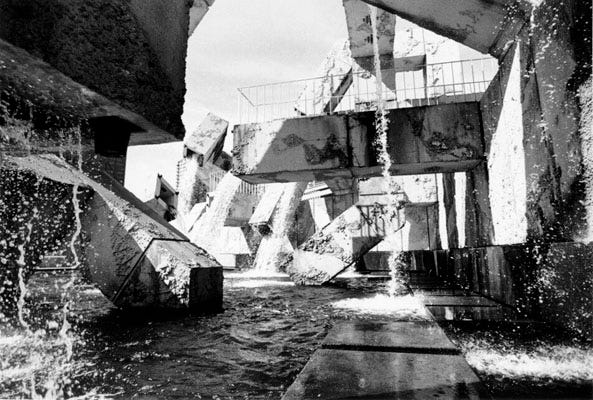
“The Embarcadero Center in San Francisco is my strongest and earliest memory of architecture. It was a magical place for a child: a building that is a street, a canyon, a tower, with catwalks, glass elevators, and flowing water. The much-maligned Vaillancourt Fountain in the Embarcadero Plaza is a centerpiece of that memory. There is a passage through the fountain made up of stepping stones set in the fountain's basin, that you pass through, hopping from stone to stone, taking care not to fall in, while getting sprayed with mist from the cascading water. It was a place to shed the propriety of restaurants, or museums, or shopping (adult things) that drew my family downtown. It felt dangerous and subversive. We ran around it endlessly, for years, and it still gives me a thrill.” —Michael Chen, architect and principal of MKCA
^ “Ricardo Bofill’s Les Espaces d’Abraxas in Noisy-Le-Grand. It was the scale of the project that really did it for me. It felt like I was walking in and around a modern, Italian Colosseo. It is also an excellent example of the theater that is postmodern architecture, however one might feel about it.” —Josh Itiola, multidisciplinary designer (and Substack-haver)
“Last summer I went to Marie Antoinette's private theater at Petit Trianon for a summer performance of two operettas. The theater has been preserved in its original state, avoiding pillage during the French Revolution because of architect Richard Mique's use of papier mache and plaster over marble and more precious materials. MA fascinates me for the position she was thrust into, her relative ignorance, her personal style, and her brief lifespan (chronicled beautifully by Stefan Zweig and Antonia Fraser). To witness work that was composed during her lifetime performed in her own private escape from the rigid etiquette of Versailles, was completely transportive. I teared up at several crescendos during the performances. Every one of my senses was on fire, my skin tingled, I felt like I had achieved something. The night ended with us watching smokey, 18th century-style fireworks explode above her grotto at midnight. Now I understand that historic architecture can only be fully understood when activated as it was meant to be when built.” —Camille Okhio, design writer, collector, and Elle Decor editor

^ “With its repetitive concrete forms, long perspective lines, and grand scale, the courtyard at Louis Kahn's Salk Institute for Biological Studies feels more like a site where a spiritual ritual, not research, might take place. What might float down the narrow stream that cuts through the center and disappears into the horizon? I had seen it in photographs many times before visiting; it is a rare space that exceeds expectations. Yes, the view was still transcendent but all of the textured travertine, weathered teak (this was before the 2017 restoration), and sound of water gave it a rich sensory experience. The space makes me wish we had more temples to science, especially given public sentiments about the value of this work.” —Diana Budds, design journalist

^ “Lina Bo Bardi's transformation of the SESC Pompéia Factory in São Paulo into a single space to house every civic function you could imagine really puts every other social condenser to shame. And in the face of an overwhelming program, the architecture contains surprises at every turn. Our favorite: the fireplace and river running through the main hall. Never has a "multipurpose space" ever felt so poetically beautiful. All of the Paulistano architects were such masters of transforming the mundane into the transcendent (see also, e.g., Mendes da Rocha's Forma furniture store or Vilanova Artigas' tennis club.)” —Aaron Forrest and Yasmin Vobis, architects and principals, Ultramoderne
^ "TRANSCENDENCE"... a very interesting concept! To be taken somewhere beyond the physical by DÉCOR/ARCHITECTURE! A tall order, one we're unsure we've experienced in sobriety. Yet, nonetheless we have a contribution, one that takes us on a trip on the human versus the astral plane: the Cité internationale universitaire of Paris. Forty buildings, a kind of perma-World's Fair. Le Corbusier, Kaj Gottlob, f*cking amazing Roger Bezombes tapestries, plus the intrigue of international soft power. And it's a goddamn series of dorms, with a mission of peace and unity (GOOD LUCK!). Just, like, every ounce of this place feels intellectual and narrative and purposeful and it SPEAKS. And that's really all we can ask for. Juicy, beautiful, vast. —David Michon, writer, strategist, and the brain behind FOR_SCALE
Tasso Katselas's 1968 dormitory for the St. Vincent Monastery in Latrobe, Pennsylvania, was a worthy detour on a recent architecture tour for Travel + Leisure. Katselas lived with the monks to understand their world, and you can feel it. We arrived at dusk and could see the cassocked monks through the geometric windows of their rooms, adding to an incredibly moving sense of harmony between building and purpose. —Christine Muhlke, person with taste (and now, a Substack)
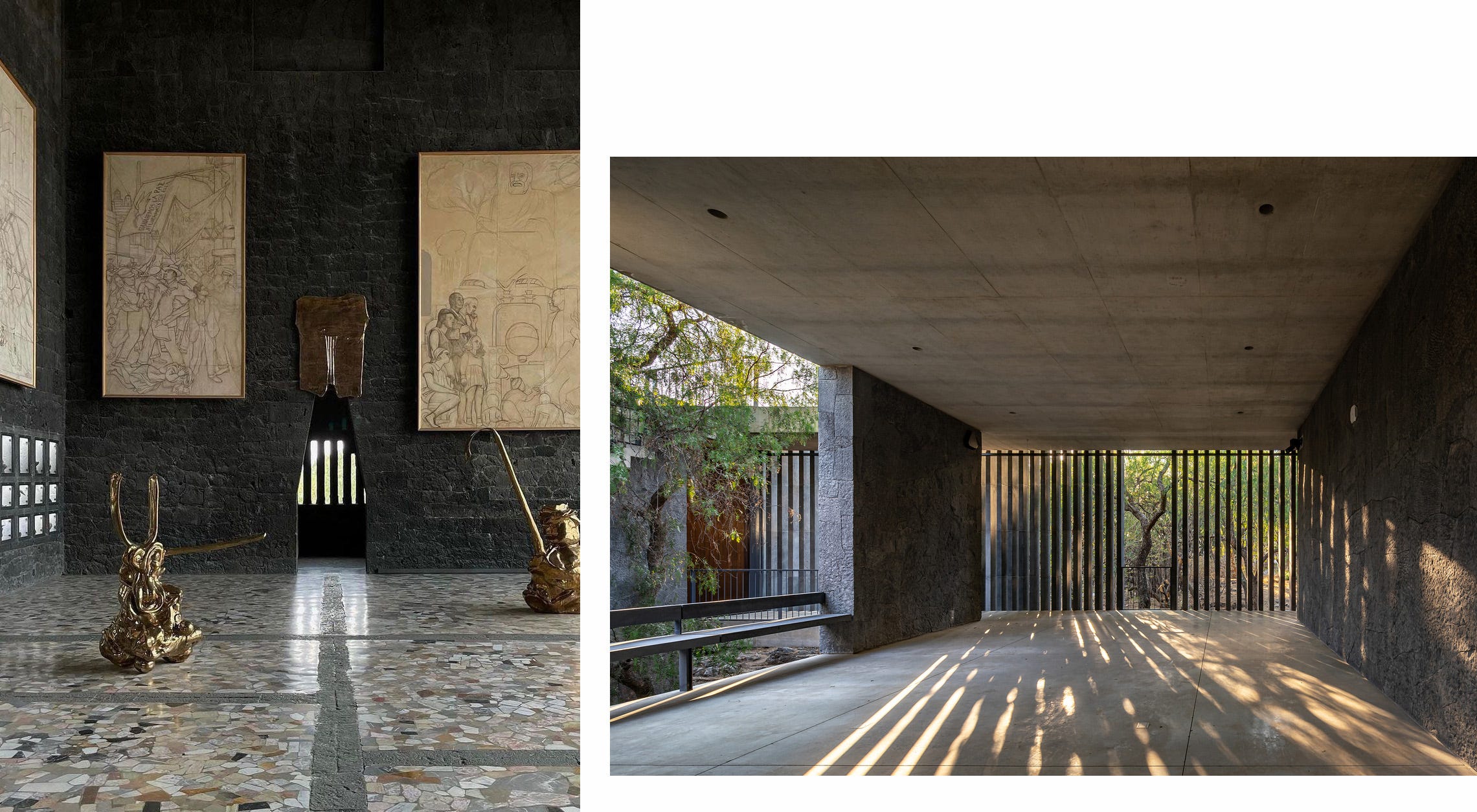
^ “The temple-like Museo Anahuacalli in Coyoacán, Mexico City, is a deeply mystical place. Designed by Diego Rivera and Juan O’Gorman, with contemporary additions by Mauricio Rocha, evokes a pre-Colombian utopia on a lava rock landscape. To cross the monumental courtyard and pass through the heavy entranceway is intimate and a little frightening—embedded in the ceiling of the dark foyer is a mosaic of Coatlicue. The Aztec goddess hovers overhead as her twin rattlesnake head slowly comes into recognition as the pale gray stones catch the light.” —Mimi Zeiger, critic, editor, and curator
“It wasn't easy putting into words my first visit to the Frank Lloyd Wright’s Unity Temple in Chicago a few years back: at once both solid and light, complicated yet simple, strange yet strangely familiar, grounding yet transcendent. I can still remember that Sunday in July, walking up the steps, out of the darkness, into the meeting hall and sitting on that floating platform bathed in light. Like all transcendent encounters, it is so easy to remember yet so hard to verbalize.” —Somsack Sikhounmuong, creative director of Alex Mill and author of Somstack
^ “Glowing and otherworldly, the Bradbury Building in downtown Los Angeles is a physical landmark and a thread through time. As you walk through the double doors and into its atrium, you are surrounded by reflective tiles that transition to matte brick, making the walls fade the sky. When I've lost the plot in my work, I find my way back here and I'm reminded by the power of a building that expresses not only what’s already here but what will come to be.” —Elizabeth Timme, architect and co-founder of Office of Office
“I’m thinking of Casa Wabi [in Puerto Escondido, Mexico], a space that is dedicated to the flourishing of artists. Architecturally, it aligns what Tadao Ando does best and also what Bosco Sodi wanted [for an artists’ residency]. It was really inspiring to me both as an editor—I was like, This is exactly why I got into architecture. It made me so grateful to be a person. Now we are talking so much about AI and digital production, and in 2017 when I visited it for the first time, I wasn’t thinking about those things in the same way. But it is so intensely personal to build a folly on the beach, just because you wanted to. What’s more human than desire?” —Asad Syrkett
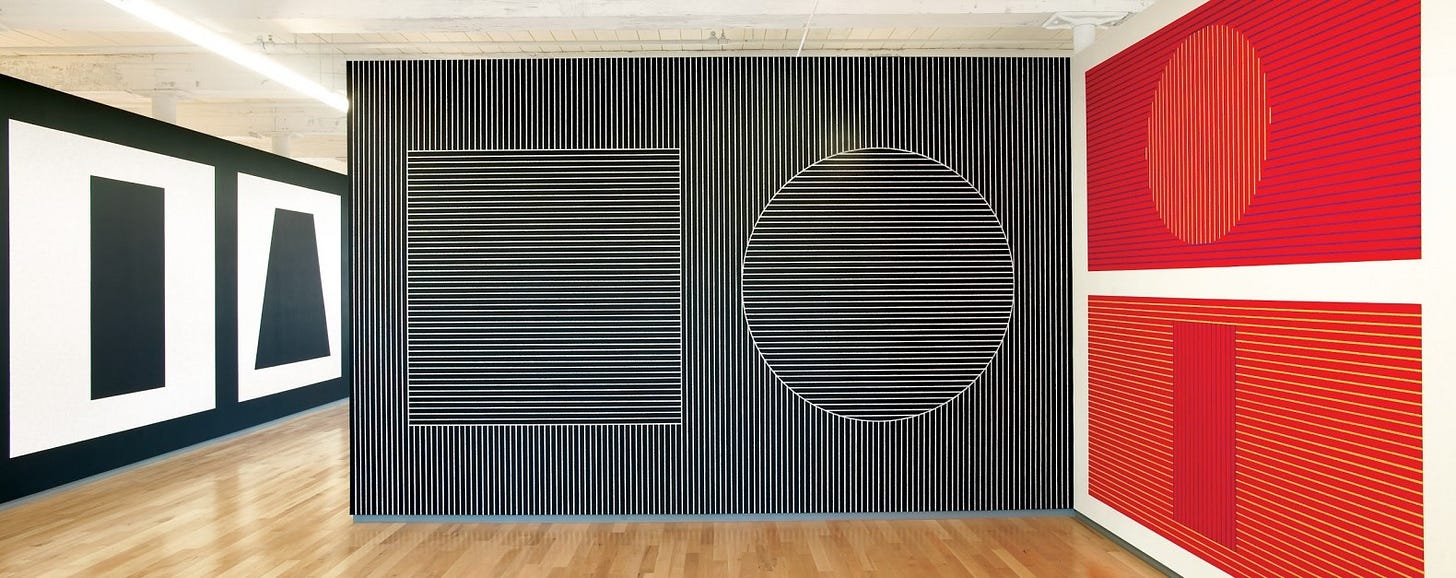
^ “I think the Sol LeWitt installation at Mass MOCA provides that kind of experience. It isn't a singular or minimalist space, but it is so rare to be exposed to a sequence of such saturated color, in all of its permutations of material and instruction. You truly could go back again and again, take different routes, and just be smacked in the face with COLOR and GEOMETRY.” —Alexandra Lange, architecture critic
“One of my peak experiences (in architecture, and life in general) was eating dinner at the Miller House [in Columbus, Indiana]. After spending so much time poring over the home's archive, having a meal at that epic, glowing poured-terrazzo Eero Saarinen table was a most transcendent experience that still feels like a dream. To make it even more surreal, the site manager of the house played Steely Dan on the piano while we ate.” —Amy Auscherman, director, archives and brand heritage at MillerKnoll
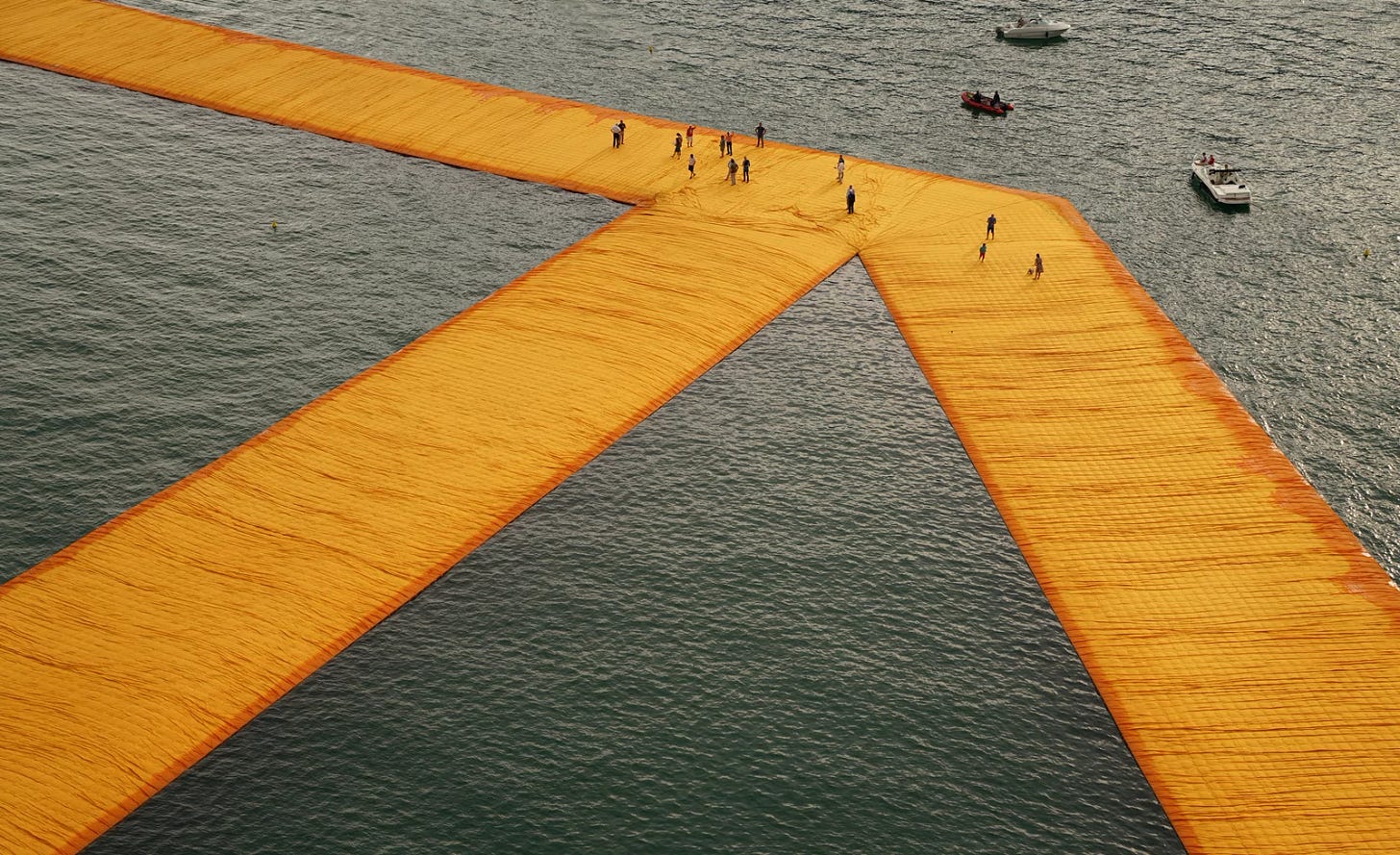
^“The floating piers on Lago Iseo by Christo and Jeanne-Claude was a highly restrained, yet exceedingly detailed, project that granted unusual access through the center of this spectacular landscape that is never possible on foot. The orange (bright yet warming), the drapery of the pier (precious and delicate but well engineered), the path (sturdy, but swayed up and down with the water). Those juxtapositions made the experience feel out of body. My senses were definitely piqued.” —Anooshey Rahim, landscape architect and principal, Dune Hai
“At the tender age of 10, I took my mom on a Mother's Day date to the National Gallery of Art East Building by I.M. Pei. Moving through the revolving doors into that atrium, vast and intimate, Alexander Calder echoing all over that place, I was transformed. That sweet spring day put into motion a lifetime of seeking spaces that can confidently hold their own as both the backdrop and the keynote, all at once. I took my daughter there this past year and it was wild to watch her little hands reach for the smooth carved stone at the escalator, a place that my hands have touched so many times throughout my own life.” —Karie Reinertson, designer and co-founder of Mother Studio
^ “The Chichu museum, Benesse House, and Lee Ufan museum—all by Tadao Ando—on the island of Naoshima in Japan. Together, these three are a transformative experience, particularly in the way the stark forms contrast with the environment. The monumentality of the architecture invokes feelings of awe and recalls a religious experience in the communication between the environment factors (wind! light!! sound! etc) and scale and bulk and "solidness" of the buildings. There was a real dialogue to me.” —Matthew Chua, reader and architectural designer
And what’s on my list, you might wonder? Stay tuned for a future issue on precisely that topic. In the meantime, a quick aside on another environment proposed by Diana Budds: the Site of Reversible Destiny, an architecture park in Japan designed by Arakawa and Gins. As she points out,
The couple's theory is that our minds and bodies can live forever as long as we're experiencing new things. For me, the space was a reminder of the electrifying feelings of wonder and discovery we have as children and, sadly, don't experience as often as adults.
I visited the only extant Arakawa and Gins building in the US back in early 2019, a masterpiece-slash-boondoggle in East Hampton called the Bioscleave House.
The premise is that living outside of your comfort zone, even—especially!—inside your own home, will extend your lifespan. While most things that try to transcend normal human experience usually aren’t that transcendent at all, this structure is a complete trip, and I’ve thought about it for years. Visceral, yes. Sensory, yes. Do my friend Ellen and I look younger every year since we trekked out there before a January blizzard to clamber up its interior sand dunes? You tell me!
As always, thanks for reading.
Until next time,
Kelsey






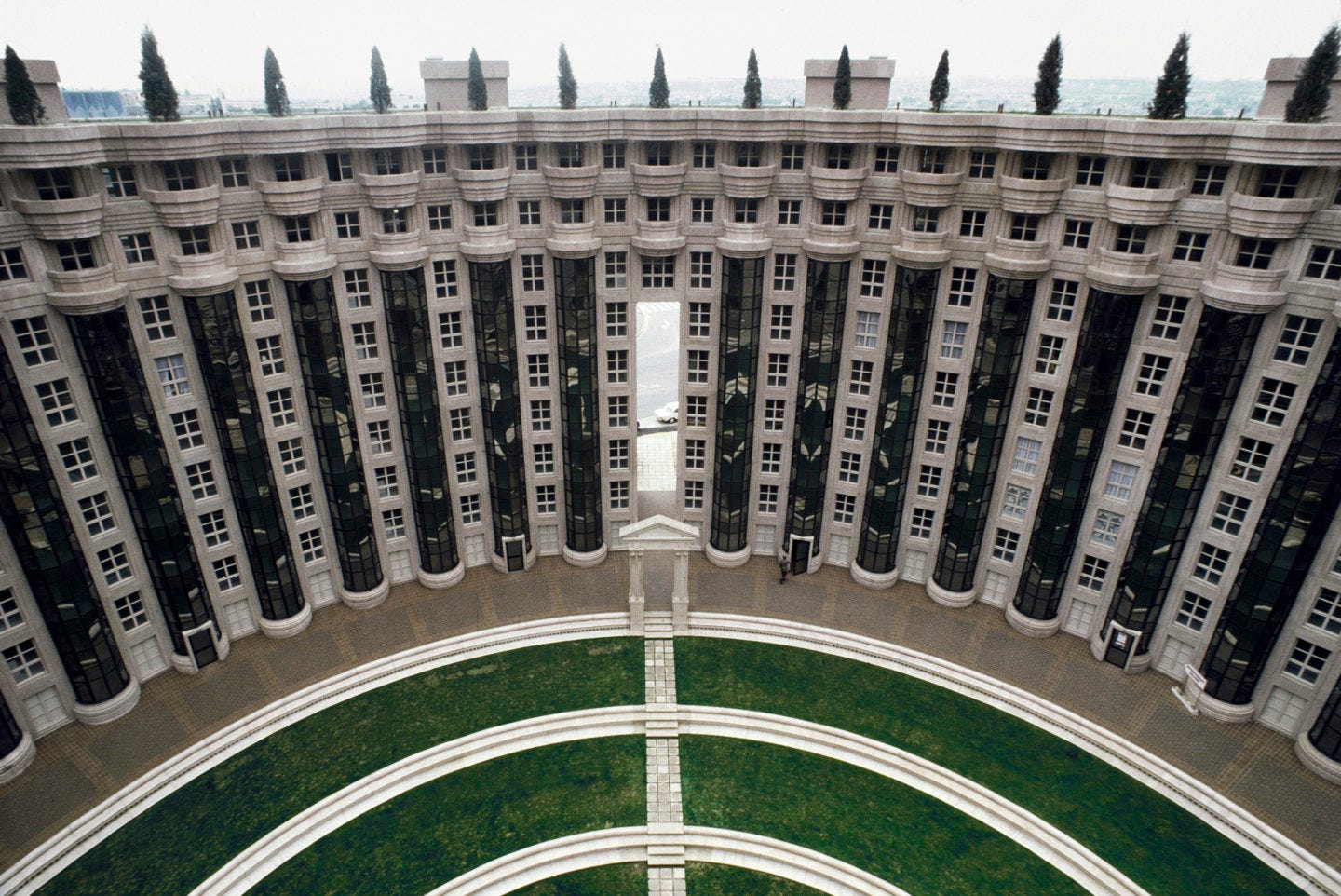
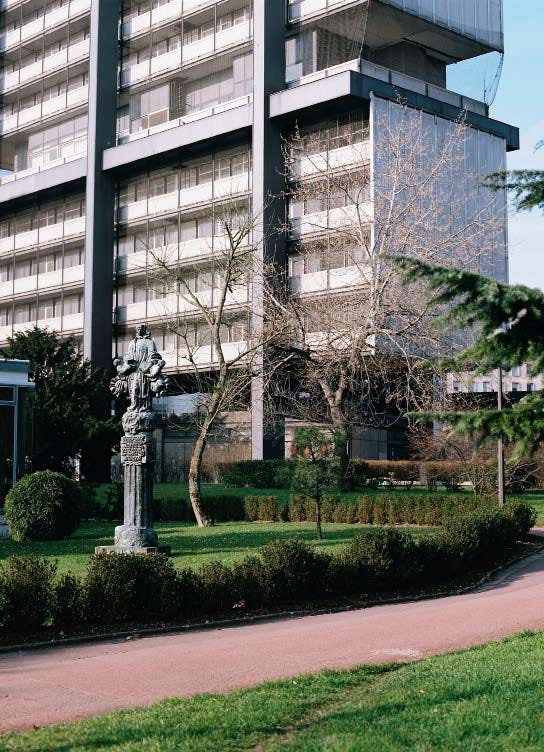
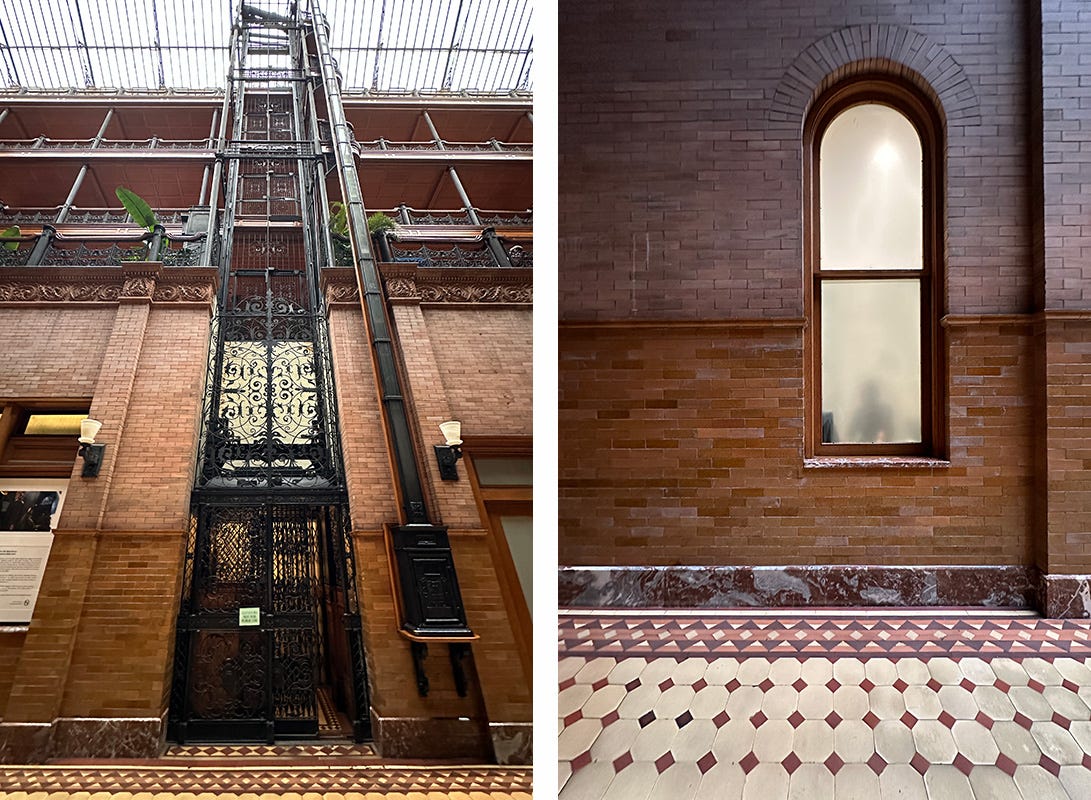
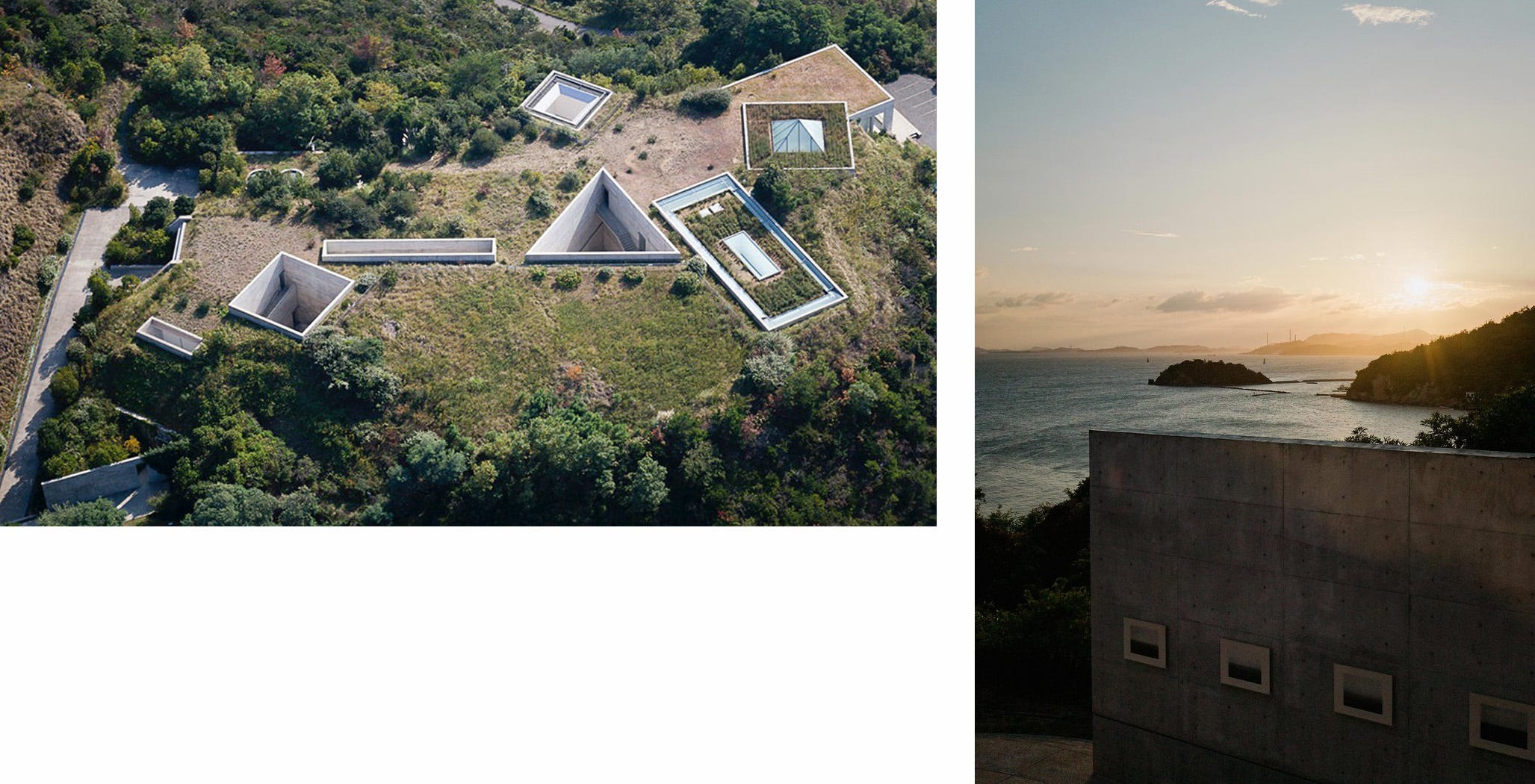

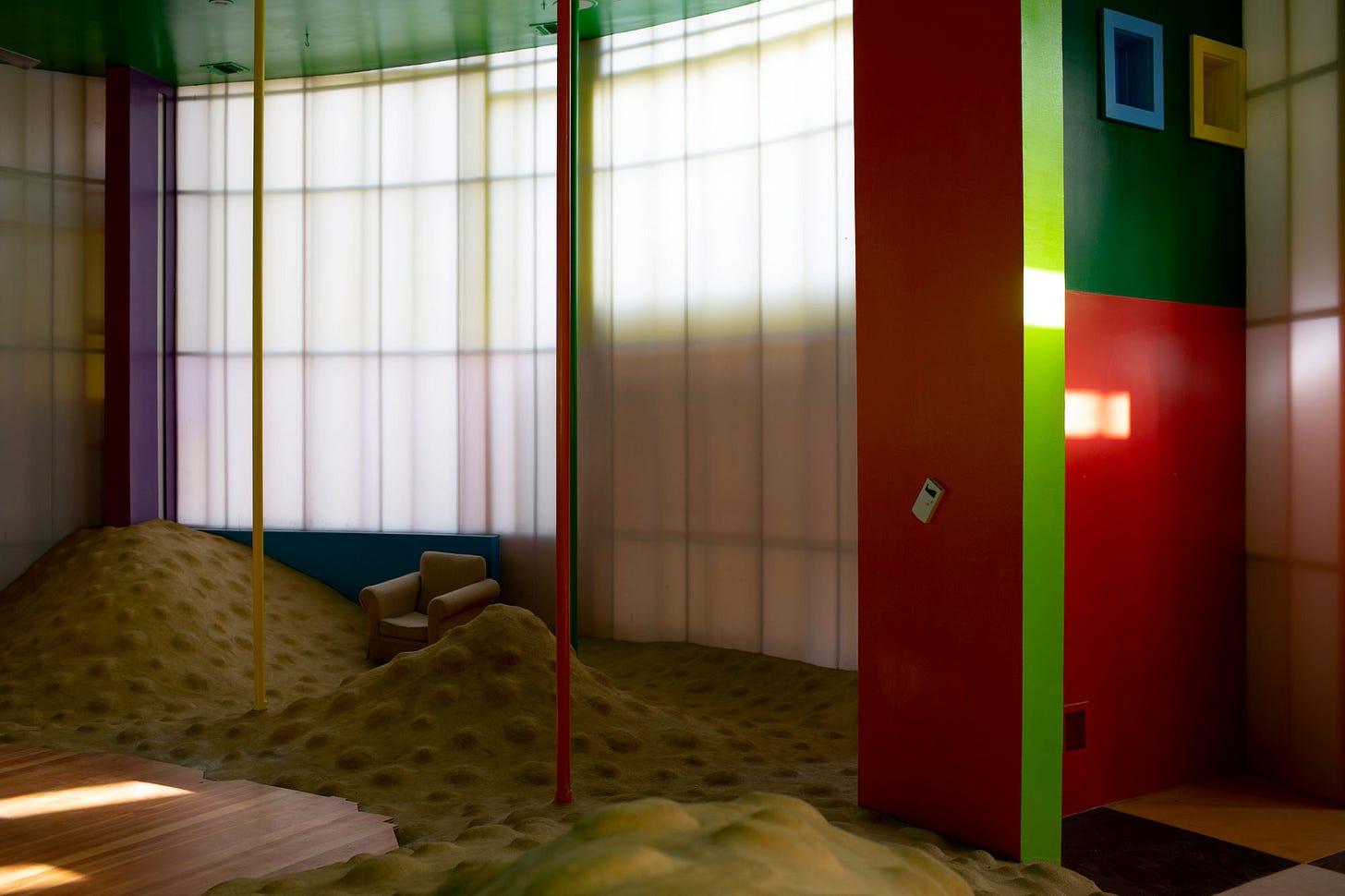
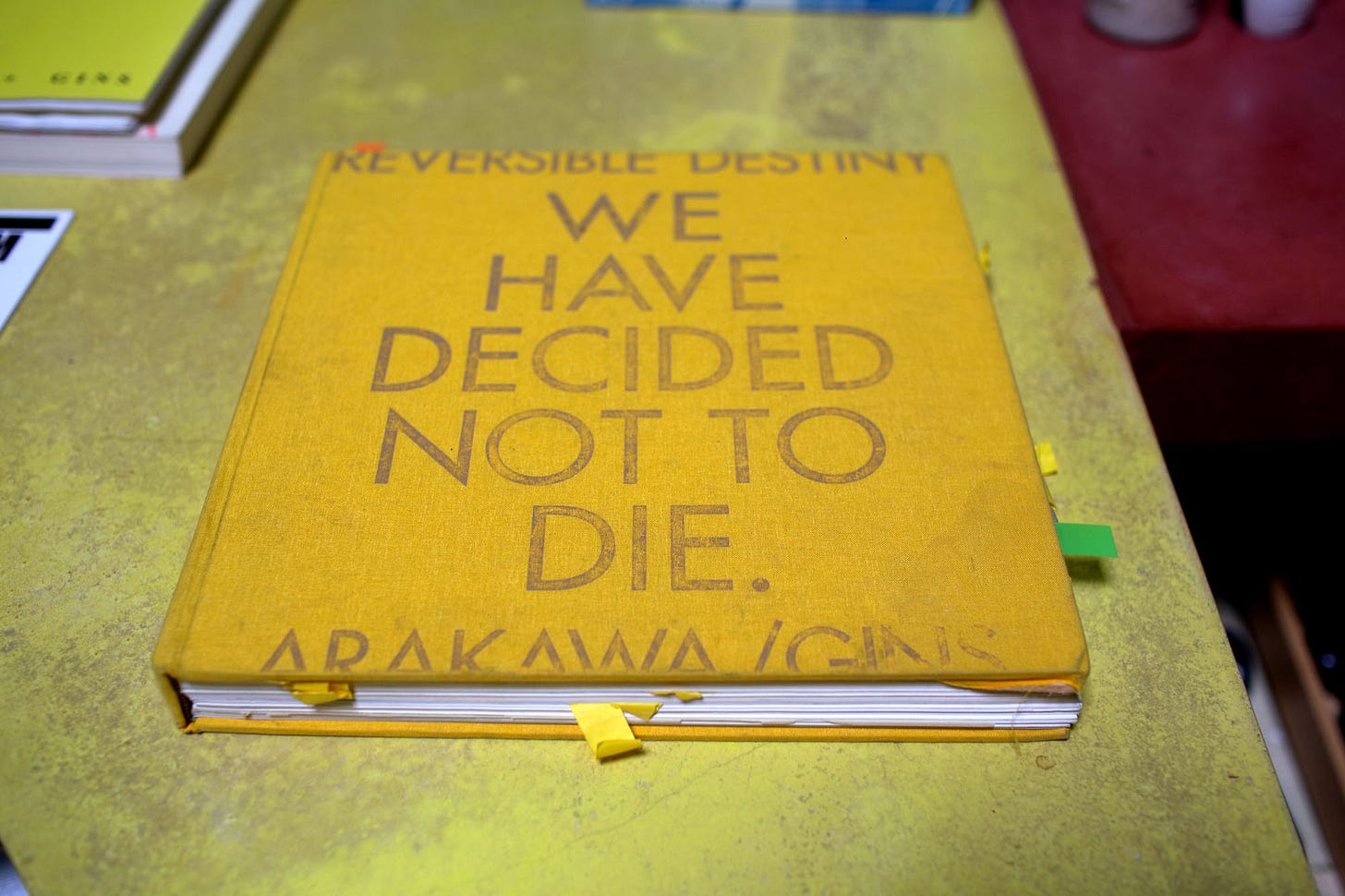

I guess this is somewhat expected given the prompt and the people interviewed, but I'm nonetheless surprised that no one mentioned literally holy structures. I've experienced strong feelings while inside of (or outside of) constructed secular spaces like the ones mentioned, but none come close to the depth of feeling evoked by my sunrise visit to Angkor Wat in 2013, which was like touching the other side in a way that I've only otherwise experienced through deep meditation or on psychedelics. (I'd include the Sistine Chapel in the same category but that had more to do with the painting than the architecture itself.)
Love seeing the Salk Institute chosen among the picks - a personal fave as well. Sagrada Familia is my overall pick, though. However, I have yet to go to Ankor Wat... I suspect that might take the cake.